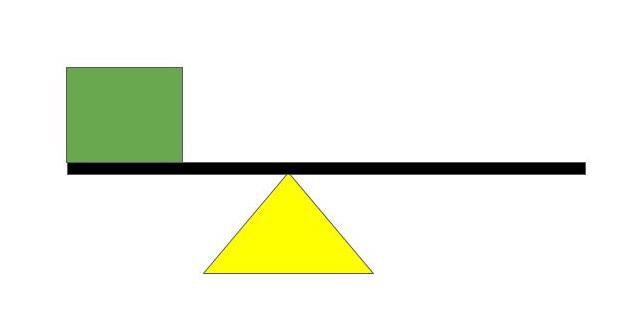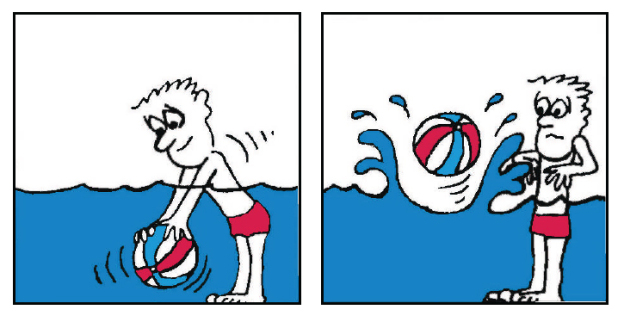Tips for using this guide: This guide is meant to be self-guided for students above grade 8. Students between grade 3-7 might need some guidance (download activity worksheet), and students under grade 3 will need teacher/parent assistance (download activity worksheet). For future challenges, visit the activity series page or sign up for the outreach newsletter to receive email reminders.
A Rube Goldberg device is a machine that completes a simple task in an extraordinarily complicated way. Building a Rube Goldberg machine is a way for you to explore many different ideas in physics, and to put those ideas all together to make something great! You can also choose to draw your machine instead of building one.
Questions? Contact UBC physicists and astronomers if you have any physics questions about building your own Rube Goldberg machine. We will also showcase your design on this page or via social media – you can share using a drawing, a video of your device, or any other creative ways you would like – on this website (scroll down for form) or by tagging us on social media.
For example, you can create a very complex machine that will serve cake:
Or put a ball into the trash bin:
Things you need for creating your own machine:
- Pick a task that you want to achieve. Pick something simple – like moving a book, picking up a spoon, or dropping a bar of soap (which is the task for the official Rube Goldberg challenge organized by Rube Goldberg’s daughter – deadline May 31, 2020!)
- Decide how many steps to take. We recommend 5-10 but you can pick any number!
- This webpage. We’ve collected some possibilities for ideas in physics that you can include in your machine. Each idea comes with an explanation and links to videos showing you that idea in action.
- Pencil and paper to design your machine.
- Supplies. Gather the supplies from your home. Make sure they are safe to use and non-breakable! This website provides a good idea of supplies you can get from home.
- Safety first. Make sure you use safe materials, and that your machine is safe to operate! If you are not sure, ask adults for help.
- Make it into a group activity (suggested by local teacher Albert C!): “There are lots of team videos where one hockey player plays with a puck and then appears to pass it onto another teammate. It would make a great video if groups of students could use a similar marble and make it look like it is rolling off one machine onto the next machine.”
Build your own!
We have selected some ideas in physics that might help you! You can go through these physics ideas before you start designing your own machine.
Levers
Levers are a tool you can use to move big objects using small ones. A lever consists of two parts, a beam and a hinge. Here’s a picture of a lever:
The yellow triangle is the hinge, and the black line is the beam. We can lift the green square by pushing down on the right side of the black beam. Making the right side of the black beam longer makes it easier to lift the square.
Experiment and explore! You can experiment with levers on this webpage: Balancing Act 1.1.24
Here are some videos explaining levers in more detail:

Examples:
Pulleys
A pulley is a combination of ropes and wheels that can be used to lift or pull things. Looking at the picture of a pulley on the right, you can notice how by pulling down on the rope, the weight will go up!
One reason pulleys are helpful is that they can let you lift up big weights, much heavier than you could by yourself. Check out the “compound pulleys” in the second video below for more on how this works.
Here are some videos explaining pulleys in more detail:
Examples:
Potential energy (intermediate)
Potential energy is the stored energy something has, its energy that can be released if you poke the object in the right way. For instance a ball held above a cliff has lots of potential energy, because if you let go it will build up lots of speed!
Potential energy can also be stored in a stretched rubber band, squished spring, or any many other ways.
Explore and experiment: You can explore potential energy using this simulation: Energy Skate Park
Examples:
Momentum (intermediate)
Momentum is something that all moving things have – it depends on how heavy something is, and how fast it is moving. A big object moving fast (e.g. car on the highway) has lots of momentum, and a small object moving slowly (e.g. a bumblebee) has very little momentum. If something has lots of momentum, it will be able to easily move other objects.
In the Bill Nye video on the right, you can see how the ping pong ball is unable to knock down the bowling pins, even though it is moving at a similar speed as the bowling ball. This is because the ping pong ball is very light, and has very little momentum.
For more explanation, examples, and the math behind momentum, visit this page!
Explore and experiment: You can explore momentum online using this simulation: Collision Lab 2.0
Buoyancy (advanced)
Buoyancy is an upward force on objects that are submerged in a fluid. It explains how hot air balloons fly, and how boats stay afloat. This picture is an example you may have seen in real life:
In the picture, the water is pushing upwards on the submerged beach ball, so the ball shoots towards the surface and launches out of the water. The strength of the force depends on the size of the beach ball.
Explore and experiment: experiment with Buoyancy through this online simulation “Buoyancy 1.05.”

Questions?
If you have any questions, let us know! You can reach us using the comments section at the end of this page, send us an email at outreach@phas.ubc.ca, or leave a message on our instagram post for this particular challenge. We look forward to hearing from you soon!
Share your design with us!
You can submit a video, photo, or drawing of your machine here (click on “submit your design”) or tagging #PHASRubeGoldberg @UBCphasoutreach on Instagram. We’ll share your post and send you back feedback on your machine! Remember to tell us about the physics of your machine in the video.
You recommend taking 10-20 steps in the machine – what qualifies as a step?
Hey Adrian! Let’s call a step every time a new object starts moving. For example if you have a ball roll down a slope and knock over a book thats two steps, since first the ball was moving and then the book was moving.
How can we send you video? Do you have DropBox or something? Think a video file will be too big to go over email. Thanks!!
Hello! You can use the “submit your design” form under the Share your design with us! section, and just put the link into the link submission field (I just updated the form). We will download the video and upload it for sharing via website and Instagram!
i want to try that
Hello pac man! Good to hear that you are interested – do give it a try and share your creation with us! We are here if you have any questions.